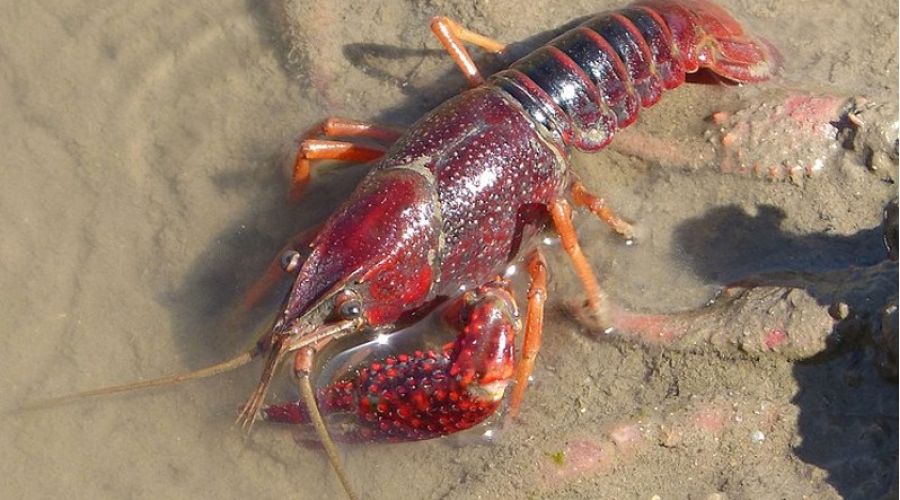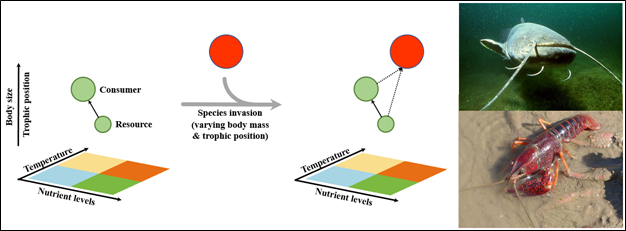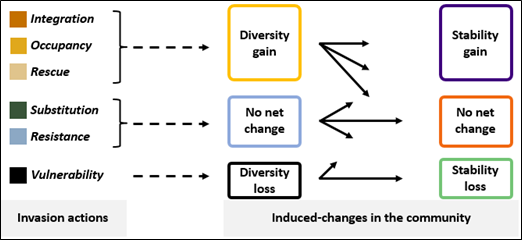Mapping community responses to species invasions in the Anthropocene

Warming climate, eutrophication and species invasions are major threats to the biodiversity and stability of aquatic and terrestrial communities. Their importance is likely to increase as we continue to change the Earth’s environment. Most regions of the world are experiencing rapid climate change and an increasing trend of species invasions in response to global change. Many alien species can severely affect their native competitors, such as the harlequin lady beetle or the invasive crayfish spreading throughout Europe. Other invasive species are becoming the new top predators with strong top-down impacts on the entire food webs, such as the wels catfish introduced in many European river basins. A new study published in Ecology Letters provides a detailed map of possible consequences of species invasions in simple animal communities affected by global change.
International team, led by Dr Samuel Dijoux from the Institute of Entomology of the Biology Centre of the Czech Academy of Sciences and the Faculty of Science at the University of South Bohemia, used numerical simulations to assess community responses to invasions across environmental gradients of temperature and nutrient levels (Figure 1).

Figure 1: In one of the model scenarios, Dijoux et al. studied a situation in which a large omnivorous species invades a community composed of a consumer feeding on basal resource and feeds on both species. Similar situations occur, e.g. when invasive crayfish such as Procambarus clarkii or wels catfish (Silurus glanis) get released in new catchments. Photo credits: Dieter Florian and Cradley Marvin (CC BY-SA)
Warming and eutrophication are likely to accelerate invasions of smaller species
The study shows that the trophic position of the invader (i.e. whether it is a predator or prey), body sizes of the local and invasive species and the environmental conditions are all important for invasion success (Figure 2). David Boukal, the senior author of the study, explains: “Overall, we found that species invasions will succeed especially in warm, nutrient-rich environments. Human activities make such environments more common, which will facilitate invasions of animal species into new areas.” The model also predicts more frequent invasions of smaller species in all trophic positions. This is consistent with other studies showing that many large, charismatic animal species are at higher risk of extinction.

Figure 2: Invasive species (red circles), especially relatively small ones, will benefit from global change.
Invasive species are not necessarily bad for local communities
The conventional wisdom is that species invasions are usually harmful and lead to the extinctions and collapses of local communities. “We challenge this traditional view. Our models predict that most successful invasions are neutral or even beneficial for local communities, as they can increase diversity and stabilise the communities and even help rescue some of them from potential collapse”, says Dr Samuel Dijoux, the lead author of the study. Future species invasions may therefore have far-reaching consequences for entire communities and ecosystems, but these consequences need not always be negative (Figure 3).

Figure 3: Invading species influence communities through diverse actions that lead to changes in the local diversity and stability regime of communities.
Dijoux, S., Pichon, N.A., Sentis, A. & Boukal, D.S. (2023) Body size and trophic position determine the outcomes of species invasions along temperature and productivity gradients. Ecology Letters 27, e14310. DOI: 10.1111/ele.14310
Contact: Samuel Dijoux (dijoux.samuel at gmail.com), David Boukal (dboukal at prf.jcu.cz, boukal at entu.cas.cz)
